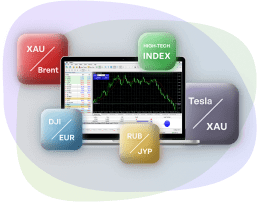AUD USD Exchange Rate Live
AUD/USD Forex Trading Conditions
| Options | Classic & Direct Standard | Classic & Direct Nano | Classic & Direct Demo |
|---|---|---|---|
| Fixed spread, pip | 2 | 2 | 2 |
| Floating Spread, pip | 0.5 | 0.5 | 2 |
| Order distance, pip | 4 | 4 | 4 |
| Swap, pip (Long/Short) | -0.18 / -0.12 | -0.18 / -0.12 | -0.18 / -0.12 |
| Pip Size | 0.0001 | 0.0001 | 0.0001 |
|
Available volumes | >=10000.00 AUD | 100.00 – 100000.00 AUD | >=100.00 AUD |
| Contract size | -/- | -/- | -/- |
|
1 pip value per 100000 | 10 USD | 10 USD | 10 USD |
| Options | Classic Standard | Classic Micro | Classic Demo | Classic PAMM |
|---|---|---|---|---|
| Fixed spread, pip | 2 | 2 | 2 | 2 |
| Order distance, pip | 4 | 4 | 4 | 4 |
| Swap, pip (Long/Short) | -0.18 / -0.12 | -0.18 / -0.12 | -0.18 / -0.12 | -0.18 / -0.12 |
| Pip Size | 0.0001 | 0.0001 | 0.0001 | 0.0001 |
|
Available volumes | 0.1 – 10000 lot | 0.01 – 1 lot | 0.01 – 10000 lot | 0.01 – 10000 lot |
| Lot size | 100000 AUD | 100000 AUD | 100000 AUD | 100000 AUD |
|
1 pip value per 1 lot | 10 USD | 10 USD | 10 USD | 10 USD |
| Options | Direct Standard | Direct Micro | Direct Demo | Pro Standard | Pro Micro | Pro Demo | Direct PAMM |
|---|---|---|---|---|---|---|---|
| Floating Spread, pip | 0.5 | 0.5 | 2 | 0.1 | 0.1 | 0.1 | 0.5 |
| Order distance, pip | 4 | 4 | 4 | 4 | 4 | 4 | 4 |
| Swap, pip (Long/Short) | -0.18 / -0.12 | -0.18 / -0.12 | -0.18 / -0.12 | -0.18 / -0.12 | -0.18 / -0.12 | -0.18 / -0.12 | -0.18 / -0.12 |
| Pip Size | 0.0001 | 0.0001 | 0.0001 | 0.0001 | 0.0001 | 0.0001 | 0.0001 |
|
Available volumes | 0.1 – 10000 lot | 0.01 – 1 lot | 0.01 – 10000 lot | 0.1 – 10000 lot | 0.01 – 1 lot | 0.01 – 10000 lot | 0.01 – 10000 lot |
| Lot size | 100000 AUD | 100000 AUD | 100000 AUD | 100000 AUD | 100000 AUD | 100000 AUD | 100000 AUD |
|
1 pip value per 1 lot | 10 USD | 10 USD | 10 USD | 10 USD | 10 USD | 10 USD | 10 USD |
AUD USD Trading Hours
AUD USD trading hours are the time when investors can buy and sell AUD USD. The AUD USD is traded on multiple exchanges around the world. This means that investors have many different opportunities to trade AUD USD during different trading hours. Depending on where you live, you may be able to trade AUD USD at any time throughout the day or night. For those who want to take advantage of these opportunities, it is important to know when AUD USD trading hours begin and end.
Australian Dollar vs US Dollar
Type: Major pair
Liquidity: very high
Trade Currency Pairs and discover the benefits of Forex trading with IFC Markets
Currency Pair AUDUSD | Forex | Major
The Australian dollar (AUD, “Aussie”) is the 5th most traded currency in the world. The issuer is the Reserve Bank of Australia.
- Is actively applied in currency exchange and trading operations, as Australia supports high interest rates, as a rule.
- Is affected by trading relations with Japan, China and the United States
- Refers to "commodity" currencies, as the economy of Australia highly depends on commodity export (particularly on gold and other metals mining)





